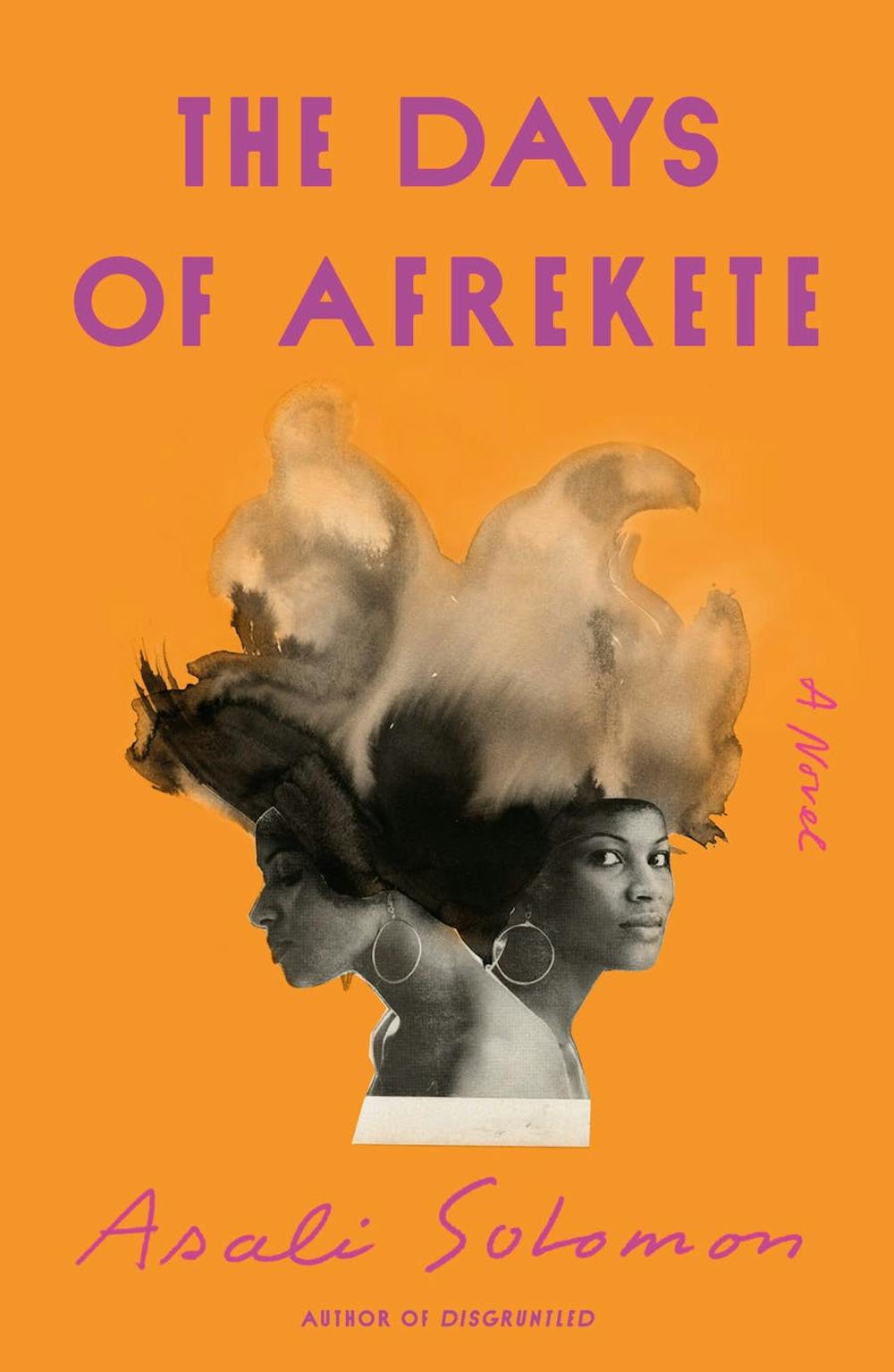“Liselle’s 41 years of research suggested that no matter how distant, abusive, judgemental, unloving and useless one’s mother was, one called her when things fell apart.”
This is how Asali Solomon’s “The Days of Afrekete” begins — with the less-than-comforting phone call between the protagonist Liselle and her mother Verity, the former’s life on the verge of being uprooted. But this interaction reveals the cracks that have always existed in the life Liselle crafted for herself, fractures that deepen as the novel progresses. It also instantly establishes her relationship with her mother, whose unforgiving honesty and acute intuition Liselle depends on in ways she never fully acknowledges. Although she is never actually seen, Verity remains a lingering presence throughout the novel as it explores the layers of Liselle’s consciousness through an intimate third-person perspective.
The entire novel takes place over a single day in which Liselle is hosting a dinner party, shifting between the past and present not unlike Virginia Woolf’s “Mrs. Dalloway.” Solomon directly alludes to Woolf, as well as Toni Morrison’s “Sula” and Audre Lorde’s “Zami,” all of which were significant inspirations for the novel. Solomon adeptly evokes the voices of these women — stylistically, relationally and verbally — without ever losing her own.
In fact, Solomon creates in Liselle a character so multifaceted, she becomes a person too real and complicated to be constrained by ink and paper. Liselle’s semi-ironic comments about “the routine deprivations of being Black, female and gay in America” are just as revealing as her deeply personal admissions about her ex-girlfriend Selena from college. She frequently recalls their intimate interactions: “As they ribbed each other, she suddenly felt the rightness of the world. Knowing, however, that the world was dead wrong, she knew the feeling must be Selena.”
Selena was a first-year in college when Liselle was in her senior year, and they entered a passionate relationship that lasted four months. After guiding readers fairly deep into the consciousness of Liselle, the novel shifts briefly to Selena’s perspective. It details her suicidal thoughts, stays at psychiatric hospitals and the meticulous routine she crafted in an attempt to retain mental stability while working two jobs and staying with her “unhappy parents.” While Selena’s character is also vivid and strongly developed, the shift in perspective toward the end of the novel seems somewhat abrupt and insufficient, falling short of the seamlessness with which Woolf weaves together the consciousness of her characters in “Mrs. Dalloway.”
In spite of this, Solomon’s novel is undoubtedly a masterpiece. With the same incisiveness with which she develops the emotional complexities of her characters, she captures the social and political climate of the exact historical moment in which her novel is set, the second term of Barack Obama’s presidency. “The night they went to bed and there was a stupid old white president and when they awoke there was a smart, youngish, Black one,” Solomon writes.
Her evocation of this historical period is not restricted to the backdrop of a political event with widespread implications. It seeps into the daily interactions of her characters, even apart from their own involvement in politics. The collective optimism characteristic of Obama’s presidency is presented alongside the persistence of prejudice among the affluent white population in the novel — the implicit racism, the microaggressions, the continued gentrification.
But if Solomon’s social commentary is unparalleled, it is ultimately for its exploration of class privilege and intersectionality. Although she comes from “humble beginnings,” Liselle is now decidedly rich, and the dinner party she is hosting has a guest list made up of equally privileged people. The presence of Xochitl, the daughter of the domestic help Liselle employs, looms over the event — her presence is made more significant by Liselle’s hyperawareness. Xochitl is a PhD student and immigration rights activist, and Liselle’s discomfort at making someone more educated than her clear her tables is not insignificant, nor is her shame at having Xochitl’s mother, “an old woman with bad knees,” cleaning her toilets. Still, though she seems emotionally unprepared for the privilege she now enjoys — and that creates an awkwardness heightened by her experience as a Black, gay woman — she is physically accustomed to it on some level, making only weak attempts to help with the household chores. This duplicity is not lost on her: “She felt her ever twoness as the Black mistress of a tiny plantation.”
Intersectionality is a fairly new concept — the word was coined in 1989 and popularized even more recently. Not only does this mean that Solomon’s exploration of privilege and oppression through the intersectional lens lends itself to the precise socio-political climate she so vividly evokes, but it also makes her novel a rare and powerful presentation of how the frictions caused by intersectional identities manifest on a personal, everyday level.
It is safe to say, for these reasons, that Solomon’s “The Days of Afrekete” is groundbreaking work. Under the layers of insight, at the very heart of the novel, is a gut-wrenching and profound relationship between two women. It is the depiction of this relationship that will propel readers forward until they reach the end, which comes much too quickly.





